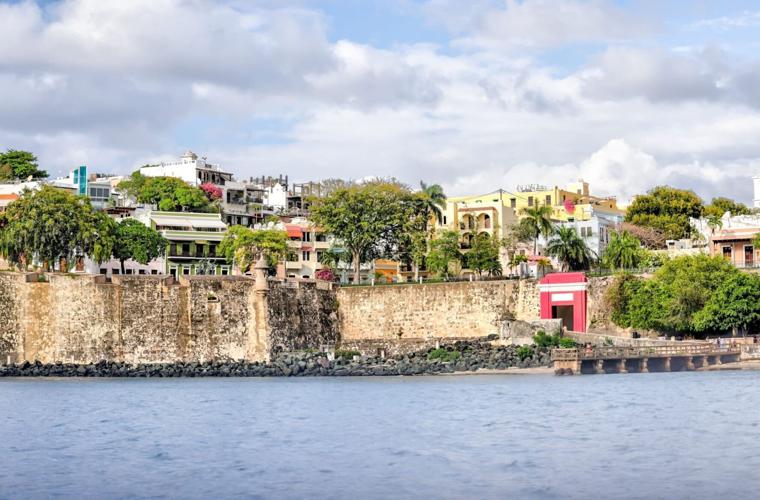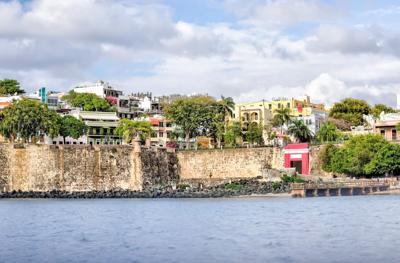As Puerto Rico’s tourism economy hits new highs, a quiet movement is reshaping how and where visitors experience the island. From bee farms in the mountains to dragon fruit fields in the southwest, a new kind of tourism is taking root.
For Ingrid Rivas, sustainability isn’t just a trendy concept. It’s the core of her business, a 25-acre farm in Puerto Rico’s southwest Cabo Rojo region where she grows dragon fruits and ornamental plants.
A popular getaway for American tourists, Puerto Rico has long been associated with postcard-perfect Caribbean beaches, piña coladas, and a rich colonial history. However, local tourism leaders now aim to promote the island as a destination where visitors can engage in outdoor activities away from major travel hubs and immerse themselves in local culture, all while leaving a minimal carbon footprint.
Focus on Agrotourism
For Rivas, an agronomist who runs Hacienda Tahiti Verde, the goal is to practice regenerative agriculture and maintain zero waste. When visitors come to her farm, they can stay in one of the rustic cottages, enjoy farm-to-table meals, and learn about sustainability efforts.
“We are committed to creating a farm that not only produces food but also nurtures people and the land for future generations,” Rivas said.
Rivas’ story is one of resilience: her farm was nearly wiped out several times first, in 2015, when severe drought devastated her crops, and then in 2017, when Hurricane Maria struck the island, destroying her newly established 3-acre field and obliterating all 16 varieties of Pitahaya that she planted to reignite her business.
“We strongly believe in growing alongside the community, ensuring that our efforts benefit the land and people. We want our workers and visitors to enjoy the beauty of nature while reconnecting with the simple things in life, creating a space where stress fades away and a deeper appreciation for the land emerges,” Rivas said.
Ricardo Caraballo is a tour guide in Puerto Rico who offers beekeeping tours in the mountains of Yauco, a rural hub of Puerto Rican coffee production. Located about a half-hour from Ponce, Yauco isn’t a tourist hub. Still, Caraballo hopes to attract more tourists to his property, where he offers educational tours about beekeeping and gastronomy experiences that allow visitors to try homemade dishes made with local honey.
Caraballo said his priority is to offer a glimpse of how honey is harvested and educate his guests about the job of a beekeeper.
“We want to educate (visitors) about the importance of bees in pollination and the impact on the ecosystem for maintaining sustainability in flora and fauna. And the impact that bees have in agriculture is huge in the need to pollinate crops that produce food,” Caraballo said.
As many popular destinations grapple with the effects of over-tourism, Puerto Rico is no exception. While some parts of the island, such as San Juan, have experienced gentrification in recent years, Puerto Rico’s off-the-beaten-path agro-tourism activities offer a welcome respite from the crowds and an opportunity to learn about the essence of Boricua, the term Puerto Ricans use to describe their culture.
The Green Path

View over the El Yunque National Forest in Puerto Rico. Image Credit: Dennis van de Water / Shutterstock
Discover Puerto, a marketing organization tasked with promoting the island, recently rolled out The Green Path, a new microsite that aims to encourage visitors to become certified “Responsible Travelers” through engaging educational content and immersive storytelling focused on sustainability.
The Green Path invites travelers to embark on a personalized digital journey aligned with their travel values and learn best practices for eco-conscious exploration across the island.
Officials with Discover Puerto Rico stated that the Green Path was designed to reduce overcrowding, encourage exploration beyond the most visited regions, and inspire longer stays, aiming to drive consistent occupancy and ensure the benefits of tourism are shared more evenly across the island.
“This project is about creating a more balanced and thoughtful approach to tourism. By spotlighting diverse regions and responsible travel opportunities, we aim to extend the benefits of tourism across the Island – supporting local economies, preserving our heritage, and protecting our environment,” said Glorianna Yamín, vice president of marketing at Discover Puerto Rico.
Tourism Economy is Booming
Puerto Rico hit a whopping $1.95 billion in lodging revenue in 2024, a sign that the island continues to be a popular choice for many travelers.
However, recent travel trends indicate that travelers are now seeking places that foster deep connections with local cultures and environments. According to Discover Puerto’s marketing data, 2025 has already witnessed a noticeable shift toward eco-friendly accommodations and activities, such as snorkeling, that minimize environmental impact.
As Rivas’ property has expanded to agrotourism, she welcomes more visitors to her property, where she cooks farm-to-table dishes from fresh produce and shares her journey with her guests.
“Education is at the heart of our mission,” Rivas said. “We aim to inspire younger generations by demonstrating that success is achievable when they learn and work with the land. At the same time, we strive to educate people of all ages about different crops, farming methods, and sustainable practices.”












